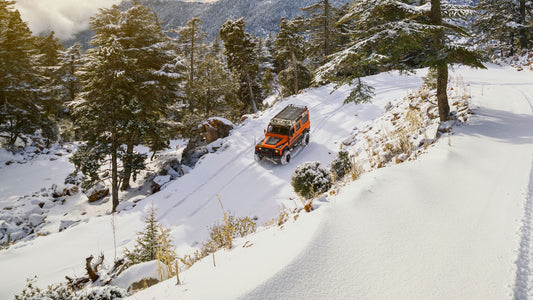Overlanding, the art of traveling long distances overland using self-contained vehicles, has a long and storied history. While the term "overlanding" itself is a relatively recent addition to the lexicon, the practice of overlanding has been around for centuries.
One of the first documented overland expeditions dates back to the 13th century when Marco Polo made his famous journey from Venice to the Court of Kublai Khan. However, it wasn't until the 19th and 20th centuries that overlanding began to take on its modern form.
The term "overlanding" is said to have originated in Australia, where farmers would move their cattle over long distances as the seasons changed. The phrase "over landing" was used to describe their journeys across the outback, and the term eventually evolved into "overlanding."
In the early 20th century, the Australian outback was largely inaccessible due to the lack of roads. That changed in the 1940s when the Australian government commissioned Len Beadell to construct a series of roads to open up the outback. Beadell, a surveyor and road builder, is responsible for the construction of several key roads, including the Gunbarrel Highway and the Canning Stock Route. These roads not only made the outback accessible, but they also became popular routes for overlanders.

The availability of four wheel drive vehicles in the 20th century helped to further popularize overlanding. With the ability to navigate rough terrain, overlanders were able to explore more remote areas and travel further than ever before. Overlanding became more accessible to the general public as four wheel drive vehicles became more affordable.
In the 1960s and 1970s, overlanding began to gain popularity outside of Australia. The Commonwealth Expedition, also known as Comex 3, was one of the largest and most peaceful overland expeditions of the time. The convoy consisted of over twenty coaches, each carrying 25 people, and traveled from the UK to India and back.
Another notable overland expedition took place between 1969 and 1970 when a convoy of four Land Rovers traveled from South Africa to the UK. The journey was not without its challenges, as the poor state of the roads in Africa made the journey difficult. However, the rewards far outweighed the effort.

Today, overlanding is more popular than ever. Advances in technology have made it easier than ever to stay connected while on the road, and modern four wheel drive vehicles are more capable than ever. Overlanding has also become more accessible to the general public, with a wide range of vehicles and equipment available to suit any budget.
In conclusion, overlanding has a long and fascinating history, from the cattle drives of 19th-century Australia to the modern-day adventurers exploring the world in their four wheel drive vehicles. The term "overlanding" may be relatively new but the spirit of adventure and exploration that it embodies has been around for centuries.
References:
- "The History of Overlanding" by James Langan, Expedition Portal
- "The Evolution of Overlanding" by Chad de Alva, Outside Online
- "Len Beadell: The Man Who Built the Roads That Opened Up Australia's Outback" by Michael Gebicki, The Guardian




